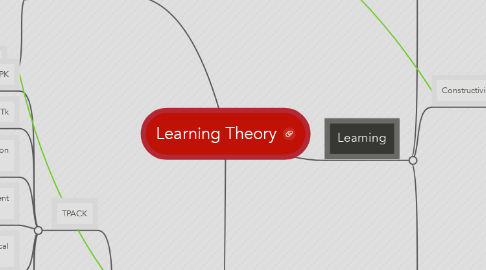
1. Technology
1.1. SCOT
1.1.1. Science and Technology studies.
1.1.1.1. Human action shapes technology, not the other way around.
1.1.2. You cant understand technology until you understand how it is embedded in a social context
1.1.2.1. Students and social media
1.1.2.1.1. Social more so than educational
1.1.3. they must ask who defines the technical criteria success is measured by
1.2. Media ecology
1.2.1. 20th century change that shows how media helps in a classroom
1.2.2. study of complex communication systems as environments
1.2.2.1. Environment such as a classroom
1.2.2.2. a complex message system which imposes on human beings certain ways of thinking, feeling, and behaving.
1.2.3. How media of communication affect human perception, understanding, feeling, and value
1.2.3.1. why media make us feel and act as we do
2. Frameworks
2.1. TPACK
2.1.1. Pedagogical knowledge PK
2.1.1.1. How I teach
2.1.2. Technological Knowledge Tk
2.1.2.1. technology tools I use
2.1.3. Content Knowledge Reflection CK
2.1.3.1. What I know
2.1.4. Pedagogical content Knowledge PCK
2.1.4.1. How I teach what I know
2.1.5. Technological Pedagogical Knowledge TPK
2.1.5.1. How I teach with what I use technologically
2.1.6. Technology content knowledge
2.1.6.1. Wil the technology I use enhance what I know?
2.1.7. Technology Pedagogy Content Knowledge TPCK
2.1.7.1. Balance between all three.
2.2. Philosophy
2.2.1. Your own beliefs on teaching. According to TPACK, you can be more interested in one or two pieces than the other.
2.2.2. Personal beliefs, changes per teacher
2.2.3. Technology of teaching
2.2.3.1. Teachnology
2.2.3.1.1. philosophy about technology use in the class room
2.2.3.1.2. how teachers can combine technology with the knowledge
2.2.3.1.3. more modern way of teaching
2.2.3.1.4. not just a tool
3. Learning
3.1. Connectivism
3.1.1. Learning through networks
3.1.1.1. Facebook
3.1.1.2. Twitter
3.1.1.3. Google
3.1.2. Learning through the digital age
3.1.2.1. Calculators
3.1.2.2. Non human appliances
3.1.2.3. Something is known but not actuated
3.1.3. Exponential
3.1.3.1. By plugging into a network, knowledge grows
3.1.4. Good for education, because it can keep both students and teachers connected.
3.2. Constructivism
3.2.1. Learners build knowledge upon pre-existing knowledge
3.2.2. Collective understandings
3.2.2.1. Working together to create knowledge
3.2.2.2. Teaching others what you learned
3.2.2.3. Good for students in a classroom to help teach peers.
3.2.3. Schemas
3.2.3.1. They can modify knowledge
3.2.4. Challenge
3.2.4.1. Forces students to go outside of their comfort zone and expand upon their knowledge.
3.2.5. Learning is active
3.2.5.1. Students learn, expand, think and judge current and new concepts
3.3. Cognitive Load
3.3.1. Explains the limits of working memory
3.3.2. Cognitive architecture
3.3.2.1. Sensory memory
3.3.2.2. Short term memory
3.3.2.3. Long term memory
3.3.2.4. Schemas
3.3.2.4.1. Written lin long term memory by working memory
3.3.2.4.2. Automatism is a result of this
3.3.3. Extraneous
3.3.3.1. Force working memory to move away from building upon Schemas
3.3.4. Instrinsic
3.3.4.1. Complexity of the elements in the environment
3.3.5. Germane
3.3.5.1. Schema building and automatism
